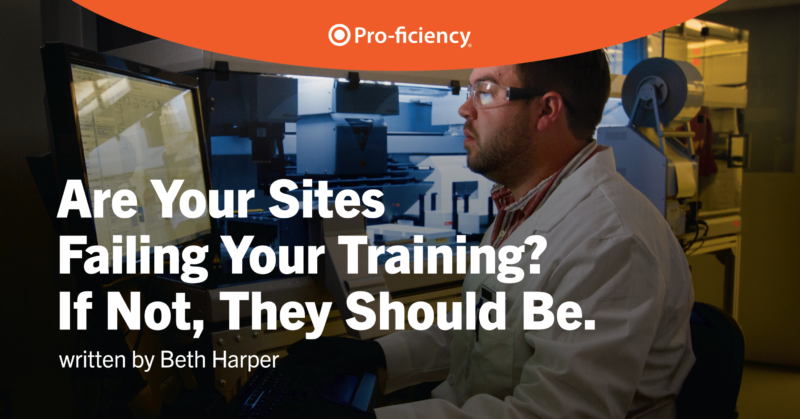Over the last several years, the pharma industry, along with the world at large, has become increasingly focused on issues of diversity. This has been reflected in regulatory guidelines, government and industry policies and in the clinical trial recruitment phase of new drug research and development. However, relatively little attention has gone to diversity within the clinical research workforce, which many industry insiders have suggested can significantly enhance study population diversity.
But sponsors and research sites will need to invest in training to ensure that diversity and inclusiveness are priorities not only for individual clinical trials, but also for general operations.
The bulk of focus regarding diversity has been on ensuring sufficient representation in clinical trial populations in order to meet regulatory standards for data submitted in support of marketing authorization. For instance, current NIH policy, as updated in 2017, encourages inclusion of women and minorities in clinical trials. The policy requires valid analysis and reporting of sex/gender, race and ethnicity through ClinicalTrials.gov. And in the autumn of 2020, the FDA issued a guidance on enhancing diversity in clinical trial populations.
In November of 2019, the NIH published a notice of interest in diversity among workers in the research and discovery process; that notice did not, however, address the clinical research workforce.
Industry groups also have focused on diversity. The Society for Clinical Research Sites (SCRS), for instance, has developed tools through its Diversity Awareness Program to improve recruitment of diverse patient populations in clinical trials. The SCRS program includes an assessment tool to provide guidance for research sites to improve their ability to recruit diverse patient populations for their clinical trials.
“However, little emphasis on diversity in the workplace is evidenced in the clinical research industry,” Erika Stevens, chair of the ACRP board of trustees and leader of Transformation Advisory Solutions at Recherche Transformation Rapide, wrote earlier this year in a column for Clinical Researcher.
But that could be changing. In 2019, ACRP’s existing Partners in Workforce Advancement launched a digital media campaign to boost awareness of the clinical research profession among a more diverse student population.
Stevens also noted that ACRP has launched a Diversity Advisory Council aimed at growing diversity of the clinical research workforce, help to further develop the existing minority workforce and improve engagement within the industry on the value of diversity and inclusion.
“Developing a larger, more diverse workforce is imperative to the existence, quality and efficiency of clinical research and the inclusion of more diverse clinical trial participants,” ACRP wrote on the “Partners in Workforce Advancement” page on its website.
The value of a diverse workforce—particularly in how it can affect clinical trial recruitment—is an increasingly noticeable theme within the industry. For instance, PRA Health Sciences stated on its website that “diverse clinical research starts with the healthcare workforce.”
“Diversity initiatives are a hallmark of clinical research. From FDA-penned guidance and pharma initiatives to years of research showing that diverse trials improve outcomes, researchers have placed ample focus on the importance of diverse trial populations,” PRA wrote. “Diversity is also essential in the clinical research workforce.”
PRA suggested that increasing diversity in the clinical research workforce may improve diversity among clinical trial participants.
“If you see it, you remember it,” Mary Beth Panagos, simulation producer at Pro-ficiency, agreed, discussing how diversity-focused training can enhance diversity in trial populations. “You are looking out for it.”
Training is important because it is possible to unwittingly introduce unconscious bias in people, Panagos said. If a training shows training with all white Americans, for instance, it might be easier to dismiss someone from Bangladesh.
Minority participants often cite a lack of trust in researchers. That trust can be built via what PRA refers to as culturally competent communications, also known as cross-cultural communication or culturally congruent communication. What it boils down to is the ability of clinical researchers to provide a shared decision-making environment that considers the context of a patient’s background.
“When the clinical research workforce—those in charge of designing and executing trials, as well as recruiting and retaining patients—is already operating from a place of diversity, equity and inclusion, the barriers to creating culturally competent communication decrease,” PRA concludes.
Diversity-focused training
And how can sponsors, CROs and research sites ensure culturally competent communication throughout a clinical trial’s life cycle? One answer that looms large is to employ training methods that emphasize diversity and inclusiveness in a variety of ways.
Panagos pointed out that there are many indicators of diversity beyond the commonly considered race and sex. Age, gender, sexual orientation, ethnicity, socioeconomic status, even geographical location and body type, are among the many metrics that can and should be considered.
It begins with representation in training materials, Panagos said. For instance, ensuring that training programs represent things that are considered nontraditional—a father taking a daughter to a doctor’s visit or a black person in a position of authority, for example– is an important part of.
Pro-ficiency’s simulation-focused training, for instance, is designed and developed with diversity in mind, Panagos said. The production team is always focused on ensuring that diverse races, genders, ethnicities, etc. are represented in all roles shown in the training.
And clients have proven to be already on board with these initiatives, with little pushback seen, she said.
A central part of that focus includes hiring actors for the simulations that represent diverse populations. Pro-ficiency, for instance, often uses a North Carolina community theatre organization for a great deal of their casting needs; this organization has proven well-able to provide actors that meet race, age, gender and other needs. Local casting can be important for this type of training, to ensure that populations local to research sites are properly represented.
“Diversity starts in the scripts,” she said. “This includes finding diverse actors. Sometimes we have to hire based on availability, but we make a point to cast diversity.”
“One of the big things is making sure that we are well-represented,” she added. “That means making sure that diversity includes positions of authority in the training materials. For instance, rather than casting a white person as the doctor, research coordinator or other authority figure in a particular scene, the production team should make a point to choose a minority actor for some of those roles.”
And when developing training for a specific clinical trial, it’s important to understand the target patient population. The training should reflect the race, age, body type and health conditions of that population.
Local representation can be important, particularly for large, multi-site trials that include international sites, or even just sites spread across a variety of discrete communities that may be culturally, racially or otherwise distinct from each other.
In addition to representational casting, diversity among the team developing a training program is an important factor, Pro-ficiency’s Natalie Rosen noted. Input from a diverse training development team can help ensure that the training presents different types of learning experiences simultaneously.
Diversity in the training design team helps ensure that the training is designed with diversity and accessibility from the outset, she explained.
For example, by using training that is designed to serve a neurodiverse population, a research site or pharma company can provide training that will work well for a variety of learning styles among neurotypical people, as well. Pro-ficiency’s simulation-based training provides information that is read, heard and seen, Rosen explained. This ensures that all learners can remain engaged throughout the training program.
“A program built around diverse needs from the beginning will benefit everyone,” Rosen said. “When training is designed and applied for the experiences of a very diverse population, it will benefit everyone in that population.”
And there is always room to increase inclusiveness. For example, training could include representations of people with disabilities, chronic health conditions or who are not neurotypical. If these individuals could be found among the target population of a particular study or site, it would be appropriate to include them in training for that trial or that site. And it can be worthwhile to include that representation generally, as well.
“We have metrics that we track across all sites,” Panagos said. “Those metrics look at critical decision points or how often trainees get something wrong. Keeping metrics for that look at diversity is an important part of this process. For instance, problems in understanding a protocol could result from faulty translation in multi-national studies or cultural misunderstandings.”
As Chief Experience Officer at Pro-ficiency, Jenna helps clients realize the full potential of their partnership with Pro-ficiency. Jenna has spent 16 years at the Association of Clinical Research Professionals (ACRP), including serving in various roles such as Business Development leader. Throughout her time at ACRP she helped hundreds of companies integrate competency-based learning, hosted by Pro-ficiency, into their workforce initiatives. In this work, Jenna began noticing her clients’ appreciation for the incredible Pro-ficiency platform, simulations, and customer service. Now, Jenna helps clients (including ACRP) realize the full potential of their partnership with Pro-ficiency.


















 By the end of 2020, there were more than 800K businesses in the US that were less than one year old. The data further shows that the largest number of new startups likely took place during the COVID year of 2021.
By the end of 2020, there were more than 800K businesses in the US that were less than one year old. The data further shows that the largest number of new startups likely took place during the COVID year of 2021.